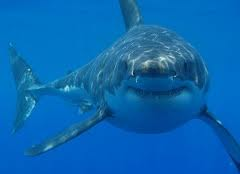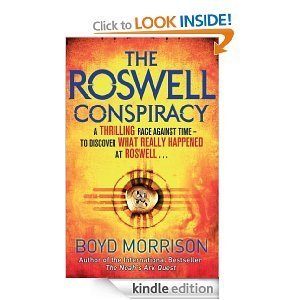Simon Rosser's Blog, page 2
October 27, 2013
Tipping Point: Facts behind the Fiction
HAS THE ARCTIC REACHED ITS TIPPING POINT?
Without giving away too many book spoilers, I thought I’d write a brief blog for anyone who may be wondering if there is any truth behind the themes in my climate fiction action-adventure thriller TIPPING POINT.
The Tipping Point of the title refers to the point at which an irreversible melting of the Arctic’s ice pack occurs. Other themes explored in the novel are geoengineering, peak oil, the ocean thermohaline circulation and the melting of Greenland’s ice sheet! Whilst Robert Spire is left to solve the deaths of the climatologists in the book, we look at whether these themes have any basis in science fact. Let’s have a look in more detail.
The Arctic
Tipping Point explores the underlying theme that the Arctic’s ice is melting from global warming. Each year the ice pack covering the Arctic melts and retreats during the summer and freezes over again in the winter, with its maximum melt each year in September. Data from the National Snow and Ice Data Centre reveals that Arctic ice cover is on a downward trend. 2007 was the lowest recorded level, but 2011 looks likely to set a new record low. Scientists predict the Arctic may be ice free during the summer between 2013 and 2019, a startling and worrying fact. This would mean the opening of the fabled Northwest Passage – a route between the Atlantic and the Pacific – and give more opportunities for countries and companies to plunder the riches the Arctic has to offer.
Geoengineering
In the book, French climatologist Francois Trimaud has developed a specialised form of iron sulphate to fertilise the Arctic Ocean, in order to slow down and reverse the Arctic’s melting ice by increasing Arctic albedo (reflectivity) levels. The experimental substance contains a whitening pigment called Blankoplankton.
Scientists are indeed looking at ways to geoengineer the Earth’s climate to solve, or reduce the effects of global warming. Iron fertilisation of the oceans is one method.
Peak Oil
A theme explored in Tipping Point is the possibility that the World’s oil resources are running out, that supplies have reached a peak and are now on a downward curve. This theory was proposed by M King Hubbert, and he successfully predicted that the USA would reach its peak oil production in the early 1970s. Has this now happened with Saudi Arabia’s oil supplies?
Ocean Thermohaline Circulation
In Tipping Point, the book opens with UK climatologist Dr Dale Stanton’s untimely death, preventing him delivering a talk on the Atlantic Ocean’s Thermohaline Circulation. The OTC or great ocean conveyor as it is known, is an important ocean current which brings warm water up from the Equator to the east coast of the USA and Europe in the form of the North Atlantic Drift and Gulf Stream. The Cli-Fi film ‘The Day After Tomorrow’ is based on the premise of the current suddenly failing, heralding in a new ice-age.
The UKs RAPID-WATCH project measures the rate or flow of the ocean current to assess whether its strength is changing. This project runs until 2014.
During a period called the Younger Dryas, a significant shutdown of the current is thought to have caused a rapid decline from relatively warmer conditions back to ice-age conditions in a blink of an eye in climactic terms. A huge influx of fresh water from Lake Agassiz is thought to have been the possible cause. The fresh water flowing into the Atlantic would have disrupted the ocean flow by interfering with its thermohaline conveyor system. Scientists are concerned that an increase in fresh water flowing into the Atlantic from Greenland’s melting ice sheets could once again disrupt the Thermo (heat) and haline (salt) engine that drives this essential current.
Greenland Melting?
A back story in Tipping Point is the fact that a huge glacier on Greenland is melting, which causes isotactic adjustment of the Greenland continent underneath. Research does indeed show that Greenland glacier ice-melt is accelerating.
These are the facts. Now if you fancy reading the latest Kindle book in the new genre called CliFi – short for Climate Fiction, then why don’t YOU try TIPPING POINT? or visit my WEBSITE for more Action-adventure Kindle books
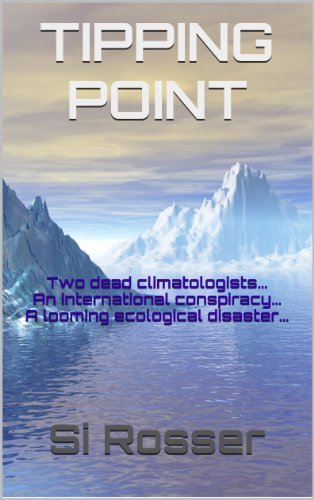
Reviews
The post Tipping Point: Facts behind the Fiction appeared first on SimonRosserAuthor.
October 17, 2013
Tipping Point author discusses new Climate Fiction genre.
Author of “Tipping Point” points out what’s tipping the scales
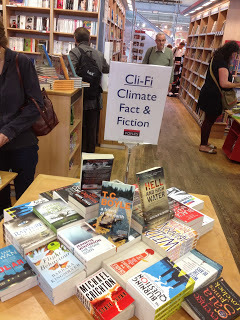
by CLI FI CENTRAL blog, October 18, 2013
Meet Simon Rosser, author of a powerful cli fi novel titled “Tipping
Point.” In a recent email interview from his home in Wales to our
office in Taiwan, Mr Rosser took the time to answer a few of our
questions about his book, its themes and his views of the cli fi
genre.
Simon says: The theme for ”Tipping Point” revolves around a plot to
melt the Arctic’s normally iced-over Northwest Passage to allow for
the movement of oil. At the same time, a climatologist has developed a
geo-engineering plan to prevent the Arctic from losing any more of its
ice. This theme is set against the backdrop global warming and the
main character, Robert Spire finds himself unwittingly thrown into the
ensuing adventure.
The story is set in the present. Motivation for the book came from my
viewing of the Al Gore documentary – An Inconvenient Truth back in
2006. After watching that, I became interested in the subject of
global warming and the confusing science surrounding it. Who was
telling the truth? What was fact and what was fiction? As a result, I
decided to write a layman’s guide on global warming - The A-Z of
Global Warming, which was published in 2008. An update Kindle version
was uploaded to KDP Select in 2013.”
He adds: “I have classed the novel as an action-adventure thriller as
it has elements of all 3 genres, but the new category of Cli-Fi fits
it perfectly!
How is he promoting the novel? Rosser says: “I have done none of the
traditional marketing promotions, simply because, in my limited
experience, paperbacks simply aren’t selling in large numbers. I invested
huge amounts of time trying to market The A-Z of Global Warming that
way, even walking around every major bookstore in London to promote my
book, but had little success. Quite a few of the stores stocked the
book, but when it’s hidden on a shelf somewhere, who’s going to buy
it? Ebook sales are a different matter, and whilst sales of The A-Z
have dropped in the last 3 months ( perhaps because global warming is
considered old news? ) sales of my fiction books had been slowly
growing. Marketing for ebooks has consisted of using the KDP Select
free 5 day free giveaways, eBook-booster and of course my website,
ebookdownloadssite.”
What are his views about the origins of climate change and AGW? “Well,
that’s a complex question, involving a very long complex answer i
think. Let’s just say The Industrial Revolution didn’t help. But then
again, the huge leap in technology has of course helped all mankind,
but the unfortunate consequence is anthropogenic global warming from
the burning of fossil fuels. My book, ”The A-Z of Global Warming”
tries to answer this very question!”
Is there hope, even hope for the hopeless, as Walter Benjamin once
said? Rosser says he is hopeful, noting: “Yes, there’s always hope. I
think human beings will be forced to adapt to climate change and
eventually come up with technology to prevent further warming or even
reverse it, using geoengineering methods. Perhaps by direct carbon
dioxide sequestration from the atmosphere, like some form of
electronic photosynthesis. In ”Tipping Point”, the French
climatologist Francois Trimaud is doing just this, by seeding the
Arctic Ocean with a modified plankton to prevent further ice loss.”
Did he always dream of being a writer? “No, it was never my dream,” he
says, adding: ” I never thought i’d be able to write a novel….ever!
After putting together the A-Z of Global Warming however, a friend
suggested i try writing a fiction book. I considered it, and combined
my interests in the environment with what i
enjoy….action-thriller-adventures. Robert Spire was invented – an
environmental lawyer, now seconded to GLENCOM, the UK’s Global
Environmental Command unit, set up to keep a keen eye on the
environmental health of the planet. He’s kind of an eco-James Bond.
Two follow-up novels have been written, Impact Point and Melt Zone,
which can be found on my Kindle Books page on my website. A fourth
Spire novel is currently being written, due for release in Spring
2014.”
Is humanity doomed? Rosser says this: “Not necessarily doomed, but i
think the world will look a hell of a lot different in a 100 years time,
let alone 500! Ocean levels will have risen, the ice caps long ago
melted. Perhaps we will have colonized the Moon, or Mars, but I’m glad
i won’t be around! Mind you, I hope to still be around the first time
man lands on Mars, or even the Moon again..!”
He also added: ”Climate change and preventing it, really comes down to
science and technology, but i do have faith in the ability of the
human species not to destroy itself.”
As for the newly emerging genre term of cli fi, Rosser says he likes
the term and is on board with it, noting: “I love the term Cli-Fi! And
no, i’d not heard of it until i saw your recent Tweet at the #clifi
hashtag! I think readers do care about the genre, especially Sci-Fi as
there seems to be a massive market for it – just look at the latest
movie ”GRAVITY”! Mind you, two of the biggest movie stars in the
world are in it! I think Cli-Fi novels have been out for a while, just
dressed up as science fiction. I did a blog entitled Ecothrillers: A
new genre?, which probably includes many books and films that would be
classed as a Cli-Fi – the one that springs to mind is, ”The Day The
Earth Stood Still” – a classic!!”
READ “Tipping Point” and see for yourself what a good cli fi novel looks like.

Reviews
[edited by Danny Bloom at CLI FI CENTRAL]
http://pcillu101.blogspot.com
POSTED BY DAN BLOOM AT 5:10 PM
The post Tipping Point author discusses new Climate Fiction genre. appeared first on SimonRosserAuthor.
October 8, 2013
Tipping Point - Action Thriller
September 17, 2013
Featured EBook: Atlantis Gene
The Atlantis Gene
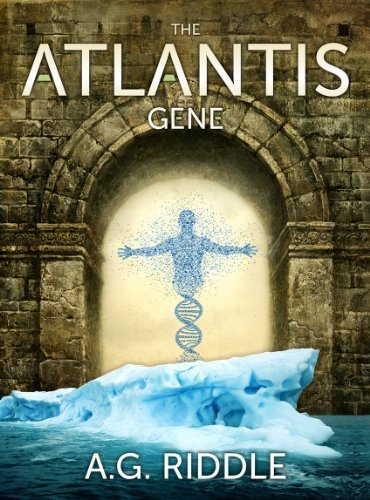
Reviews
I Very much enjoyed Mr Riddle’s Atlantis-based adventure. This is not your typical Atlantis story either, but far more sophisticated. A well thought out and planned story line that mixes the Atlantis myth with historical real world events, giving the reader a cinematic thrill ride that doesn’t disappoint. Looking forward to the second book in the series…
The post Featured EBook: Atlantis Gene appeared first on SimonRosserAuthor.
September 8, 2013
METEORITES, COMETS and BLUE WHALES!
An unlikely combination I appreciate, but nonetheless the title sums up the story line of IMPACT POINT Kindle SciFi Thriller. So, how can whales and rocks from space be connected?
Well for one, both blue whales, meteorites, asteroids and comets are pretty rare, but unlike asteroids and comets, blue whales are unlikely to harm you, unless of course your name is Captain Ahab. OK, it wasn’t a blue whale that got him, but you know what I mean! On the other hand, if a large asteroid or comet strikes the Earth, we would all be vaporized, much like the dinosaurs were 65 million years ago.
First of all, some facts. The blue whale is the largest creature that has ever lived, yes, even bigger than any dinosaur that ever existed. There are estimated to be only around 5-12,000 blue whales left in the world’s oceans, down from around 200,000 – 250,000 back at the start of the Twentieth Century, before man hunted them to virtual extinction. Thankfully their numbers are now increasing, but they still face numerous threats from shipping, global warming, increasing levels of ocean noise and being attacked by its natural predator, the orca whale.
In IMPACT POINT, Robert Spire’s adventure starts off after a blue whale beaches itself in front of him on his local stretch of Welsh coastline. A second whale is discovered in South Carolina in the USA, but what is the connection? It transpires that both whales have ingested the mineral olivine, which leads Spire and his colleague to a terrifying conclusion. Spire is helped in his task by beautiful marine biologist Dr Sally Rivea; her name is actually an anagram for Dr Sylvia Earle – Renowned American oceanographer and author of many a book on the world’s oceans and its lifeforms.
What about the space rocks? My fascination began long ago, when I first read about the massive comet that wiped out the dinosaurs. That comet is thought to have been 10 kilometers wide and left an impact crater – the Chicxulub crater – 180 km in diameter and 10 km deep in the Yucatan Peninsular of Mexico, the ancient home of the Mayans
Back to space rocks. First some facts.
Asteroids, leftovers from the formation of our solar system generally reside in the asteroid belt between Mars and Jupiter and there are millions of them.
Near Earth asteroids have orbits that take them close to the Earth. NASA has found 19,500 objects between 100 meters and 1000 meters in size to date. There are 981 over 1000 meters in size, with an estimated 70 objects over 1000 meters still undetected. In November 2011, an aircraft-sized asteroid 2005 YU55 passed by Earth at only 201,700 miles away, closer than the Moon!
The next closest approach that we know about will be Apophis, when on Friday, April 13th 2029 – yes, that’s the genuine date – it will pass by Earth at only around 18,300 miles away, within the distance of Earth’s geosynchronous satellites, a very close shave indeed. Needless to say, NASA are keeping a close eye on it!
Meteoroids are generally classified as space rocks less than 10 meters across – these are the shooting stars that people often spot streaking across the night sky.
Comets are icy bodies with nuclei – ranging from hundreds of meters to tens of kilometers across – comprised of ice, dust and rock. Just over 4000 are known about. The comet or asteroid that wiped out the dinosaurs was about 10 kilometers across.
Centaurs are objects that display characteristics of both comets and asteroids. They have unstable orbits that cross one or more of the giant planets. It is estimated there are about 44,000 of them with diameters over 1 kilometer.
Pholus, one such Centaur is thought to be partly composed of olivine.
So, if the above facts don’t scare you enough, try IMPACT POINT. Your thoughts when looking up at the night sky will never be the same again!
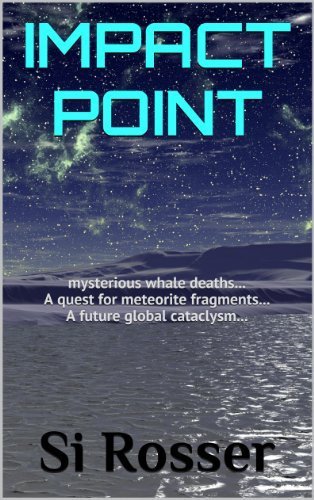
Reviews
The post METEORITES, COMETS and BLUE WHALES! appeared first on Simon Rosser - Kindle Books Author Website.
METEORITES, METEORS, COMETS and BLUE WHALES!
An unlikely combination I appreciate, but nonetheless the title sums up the story line of IMPACT POINT Kindle Thriller. So, how can whales and rocks from space be connected?
Well for one, both blue whales meteorites, asteroids and comets are pretty rare, but unlike asteroids and comets, blue whales are unlikely to harm you, unless of course your name is Moby Dick. OK, so it wasn’t a blue whale that got him, but you know what I mean! On the other hand, if a large asteroid or comet strikes the Earth, we would all be vaporized, much like the dinosaurs were 65 million years ago.
First of all, some facts. The blue whale is the largest creature that has lived, yes, even bigger than any dinosaur that ever existed. There are estimated to be only around 5-12,000 blue whales left in the world’s oceans, down from around 200,000 – 250,000 back at the start of the Twentieth Century, before man hunted them to virtual extinction. Thankfully their numbers are now increasing, but they still face numerous threats from shipping, global warming, increasing levels of ocean noise and being attacked by its natural predator, the orca whale.
In IMPACT POINT, Robert Spire’s adventure is kick started after a blue whale beaches itself in front of him on his local stretch of Welsh coastline. A second whale is discovered in South Carolina in the USA. What is the connection? It transpires that both whales have ingested the mineral olivine, to discover why, you’ll have to read the book, otherwise i’ll give away too many spoilers! Suffice to say, Spire is helped in his task by marine biologist Dr Sally Rivea; her name is actually an anagram for Dr Sylvia Earle – American oceanographer and author of many a book on the world’s oceans and its lifeforms.
What about the space rocks? My fascination began long ago, when I first read about the massive comet that wiped out the dinosaurs. That comet is thought to have been 10 kilometers wide and left an impact crater – the Chicxulub crater – 180 km in diameter and 10 km deep in the Yucatan Peninsular of Mexico, which just happens to be the ancient home of the Mayans, who just happen to foretell the end of the world in December 2012, but that’s another story…
Back to space rocks. First some facts.
Asteroids, leftovers from the formation of our solar system generally reside in the asteroid belt between Mars and Jupiter and there are millions of them.
Near Earth asteroids have orbits that take them close to the Earth. NASA has found 19,500 objects between 100 meters and 1000 meters in size to date. There are 981 over 1000 meters in size, with an estimated 70 objects over 1000 meters still undetected. In November 2011, an aircraft-sized asteroid 2005 YU55 passed by Earth at only 201,700 miles away, closer than the Moon!
The next closest approach that we know about will be Apophis, when on Friday, April 13th – yes, that’s the genuine date – it will pass by at only around 18,300 miles away, a very close shave. Needless to say, NASA are keeping a close eye on it!
Meteoroids are generally classified as space rocks less than 10 meters across – these are the shooting stars that people often spot streaking across the night sky.
Comets are icy bodies with nuclei – ranging from hundreds of meters to tens of kilometers across – comprised of ice, dust and rock. Just over 4000 are known about. The comet or asteroid that wiped out the dinosaurs was about 10 kilometers across.
Centaurs are objects that display characteristics of both comets and asteroids. They have unstable orbits that cross one or more of the giant planets. It is estimated there are about 44,000 of them with diameters over 1 kilometer.
Pholus, one such Centaur is thought to be partly composed of olivine.
So, if the above facts don’t scare you a little, try IMPACT POINT. Your thoughts when looking up at the night sky will never be the same again!

Reviews
The post METEORITES, METEORS, COMETS and BLUE WHALES! appeared first on SimonRosserAuthor.
September 6, 2013
ROSWELL INCIDENT
Major Jesse Marcel Jr - possibly the last remaining eye-witness to the events following famous Roswell Incident - died on 24th August 2013. For anyone who isn’t aware of the story, I am of course referring to the alleged crash of a flying saucer in Roswell New Mexico on the night of the first week of July 1947.
So what happened exactly? And what did Major Jesse Marcel Jr see? Well, the events back in July 1947 unfolded something like this;
Sometime during the first week of July 1947, a local New Mexico rancher, Mac Brazel, while checking his sheep after a night of intense thunderstorms, discovered a considerable amount of odd debris scattered over a wide area in a shallow gouge several hundred feet long. After taking a few pieces to show his neighbors, he drove into Roswell and contacted the sheriff, George Wilcox. Sheriff Wilcox notified authorities at Roswell Army Air Field and with the assistance of his deputies, proceeded to investigate the matter. Shortly after becoming involved, the military – in typical B-movie fashion – closed off the area and retrieved the wreckage.
A press release then followed confirming that the Army had actually recovered a crashed disk ( UFO )
Within hours, a second press release followed confirming that a “mistake” had been made, and the debris was actually from a crashed weather balloon!
Major Jesse Marcel Jr’s retired father, Lieutenant Colonel Jesse Marcel, an intelligence officer of the 509th Bomb Group at Roswell was one of the first two military officers at the actual crash site. In a 1979 videotaped interview, Jesse Marcel stated, “. . . it was not a weather balloon, nor was it an airplane or a missile.” Commenting on the strange material found at the crash site, he said, “It would not burn . . . that stuff weighs nothing, it’s so thin, it isn’t any thicker than the tinfoil in a pack of cigarettes. So, I tried to bend the stuff. It wouldn’t bend. We even tried making a dent in it with a sixteen-pound sledge hammer. And there was still no dent in it.”
Major Jesse Marcel Jr, aged 11 at the time of the crash, was witness to some of this strange material, including a lightweight beam inscribed with mysterious purplish hieroglyphs. To his dying die, he maintained that what he saw was not of this world.
Watch his video here -
Fed up of the conspiracy theories surrounding the crash, In the 1990s, the Pentagon admitted that In fact, the debris found that day came from a 700ft string of weather balloons, radar reflectors and acoustic sensors that had been launched on June 4 1947 as part of a top-secret experiment to eavesdrop on Soviet nuclear weapons tests — called Project Mogul. The hieroglyphs Marcel Jr remembered, bore a striking resemblance to purple symbols on the tape that was used to reinforce the Project Mogul radar reflectors, which been made by a toy company which, because of wartime materials shortages, used novelty tape they had in stock.
Of course, the whole thing sounds extraordinary, but was it extraterrestrial? Who knows. Clearly something came down in the rancher’s field that night, which was subsequently removed by the military… but what was it? One thing’s for sure, the Roswell Incident won’t be going away anytime soon, despite the last eye-witness to the events of that summer in July 1947 recently passing away…
Listen to Carl Sagan taking about Roswell shortly before his death -
Interested in UFOs/Conspiracy theories? Why not give my latest action-adventure thriller a try – MELT ZONE. Click the cover to take a look…
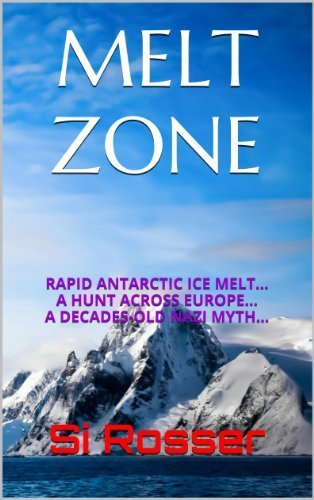
Reviews
The post ROSWELL INCIDENT appeared first on SimonRosserAuthor.
September 5, 2013
Tunguska Event
Just after 7 AM on June 30th 1908 a massive air blast occurred over Tunguska in Siberia – the Tunguska event – caused by a meteorite or comet fragment. The blast released the same amount of energy as 185 Hiroshima nuclear bombs. The object is thought to have been around 120 feet in diameter. It will happen again, it’s just a question of where and when…
Ever since I first saw a picture of the flattened trees radiating out from a central location in a desolate region of Siberia, when aged about 11, I was fascinated by what could have caused the devastation that occurred there in 1908. Various theories were put forward;
A crashed UFO
A miniature black hole striking the Earth
Antimatter collision
Or of course, an exploding comet fragment or meteorite.
Recently, Italian scientists who have been searching for remnants and evidence of what could have caused the explosion, think they may have found evidence of a stony fragment of an object at the bottom of lake Cheko. The story can be read HERE.
I also found a great U-Tube video taken from the wonderful Carl Sagan’s cosmos program. It’s not on long and well worth a watch.
Fascinated and equally concerned by the Tunguska Event, I decided to weave the facts into Robert Spire’s second action-adventure thriller – IMPACT POINT. Why not click on the cover and take a look on the book’s Amazon page and read the first few chapters for yourself…at only $2.99, it’s a bargain!

Reviews
The post Tunguska Event appeared first on SimonRosserAuthor.
August 3, 2013
SHARK ATTACK!
Having recently watched JAWS again, I decided to research shark attacks in general, and I came across the news of a recent fatal shark attack off Surf Beach in California, I realised that for me, there is nothing more terrifying than the thought of being attacked by a shark, particularly the great white variety. The chances of this happening to anyone is of course remote, but for a truly terrifying look at the global shark attack situation, here’s my blog – dum dum…dum dum dum dum… dum dum dum dum dum dum…
Following the recent California shark attack, where unfortunate Mr Francisco Javier Solorio Jr. became the latest fatal shark attack victim, I decided to find out how many shark attacks occur worldwide, and was surprised by the answer. Below are the worst cases that have taken place just in the last 12 months, most recent first. Let’s see where the most risky places to swim or surf are, and who has ended up as a fatal statistic for the ocean’s apex predator….and also those that have had a very lucky escape… 4th November 2012 – Marcelino Riglos, had his right foot and ankle bitten by a Tiger Shark while spear fishing in Hawaii.
30th October 2012 – Scott Stephens, 25, is resting in fair condition after emergency surgery at St. Joseph Hospital in Eureka, Calif. after sustaining multiple mid-torso bites from a White shark estimated at 9-to-10 feet long.
27th October 2012 – 51-year-old woman from California was attacked over the weekend by a shark off Makena Landing Beach Park on Maui
23rd October 2012 – Mr Francisco Solorio Jr fatally wounded in California
25th September – Brandon Tyler had a lucky escape when out surfing in Florida when he had his left arm bitten
10th September 2012 – Lucky escape for Kylie Maguire, 29, was bitten on the thighs and buttocks by what is believed to have been a three-metre Bull shark.
6th September 2012 – Another lucky escape for James Fyfe while out surfing in Florida. He lost so much blood he may have lot consciousness
26th August 2012 – In the last week of August, the body of Tiago Jose de Oliveira da Silva, 18, was found in the sea just south of Recife, in north-eastern Brazil. An autopsy ruled he had been killed by sharks. His death was the 56th shark attack in Recife in 20 years.
6th August 2012 – Luck escape for Fabien Bujon attacked by a Bull shark in the Reunion Islands. Witnesses said the shark had severed a hand and a foot from the victim, but he made it back to the beach by himself.
30th July 2012 – Lucky escape for Chris Myers. Massachusetts officials confirm it was a great White shark that attacked a swimmer off Cape Cod last week. Click on the link to hear the 911 call.
23rd July 2012 – Alexandre Rassica was fatally attacked in the Reunion Islands while out surfing
14th July 2012 – Ben Linden - bit of an unfortunate name – was fatally attacked by a massive White shark while out surfing in Western Australia.
If the above doesn’t scare you, these terrifying statistics from The SHARK ATTACK files will;
2011
119 incidents with 17 fatal attacks
16 male, 1 female
Most horrifying – Peter Clarkson in Australia, consumed by two white sharks as the boat captain looked on.
2010
98 incidents with 11 fatal
10 male, 1 female
Most horrifying – Henry Usimewa in Fiji, taken by a large shark in front of friends and family.
2009
112 incidents with 14 fatal
13 male, 1 female
Most horrifying – French citizen Katrina Tipio in Egypt, bitten on the leg when surfacing, shark still biting her when she was pulled onto the boat.
It’s difficult to imagine what must go through a person’s mind when being attacked by a shark, I get jittery enough when I’m swimming or scuba diving in the open ocean these days, especially if I get a chance to visit the more exotic locations of the world, which doesn’t happen very often. I remember arriving in Hawaii – on honeymoon – and being desperate to get into the water. I did, and hastily followed two turtles as they swam off the rocky reef close to the hotel. The sea was deep and the first thing that went through my mind was sharks, but I still went searching for the two turtles I’d seen. Looking back, these days, I might think twice, as I’ve gotten older, I’ve become more of a wet blanket when it comes to swimming in the ocean.
This blog is dedicated to all those brave souls who go to the aid of shark attack victims, swimming out to help someone, knowing the apex predator is still lurking about beneath the ocean, and of course all the survivors of shark attacks, families and friends of those unlucky people listed that have been killed by the ocean’s most feared creature.
It’s not all bad news of course if you enjoy swimming, surfing and scuba diving. Despite the horrifying prospect of being attacked by a shark, according to Discovery News, the odds of you getting killed, are of course, not that great…
“Sharks always seem to be taking the rap as man-eating villains –- in the media, movies and books. So let’s get a little perspective. Your chances of being attacked by a shark are just one in 11.5 million, according to the University of Florida’s International Shark Attack File. On average, there are about 65 shark attacks worldwide each year; a handful are fatal. You are more likely to be killed by a dog, snake or in a car collision with a deer. You’re also 30 times more likely to be killed by lightning and three times more likely to drown at the beach than die from a shark attack, according to ISAF.”
Even digging a sand hole is more dangerous…”
So, after reading this, what terrifies you?
Apart from being scared of sharks, Simon Rosser is the author of Kindle action-thrillers TIPPING POINT, IMPACT POINT, and the factual A-Z OF GLOBAL WARMING. Why not check them out today…?
The post SHARK ATTACK! appeared first on SimonRosserAuthor.
July 29, 2013
FEATURED EBOOK – Roswell Conspiracy
The title drew me to Boyd Morrison’s latest book and I wasn’t disappointed. An excellent roller-coaster adventure with just the right amount of SciFi, adventure, thrills and action all rolled into one. The intriguing part was of course the link to the famous 1947 Roswell UFO crash – or was it? All the characters were realistic and believable and the scenes, locations and action spilled off the page like a movie. I read the book on holiday and was sorry to get to the end. It was my first Boyd Morrison book, but won’t be the last…! Next stop, The Loch Ness Legacy. Great read. 4 STARS
The post FEATURED EBOOK – Roswell Conspiracy appeared first on SimonRosserAuthor.

